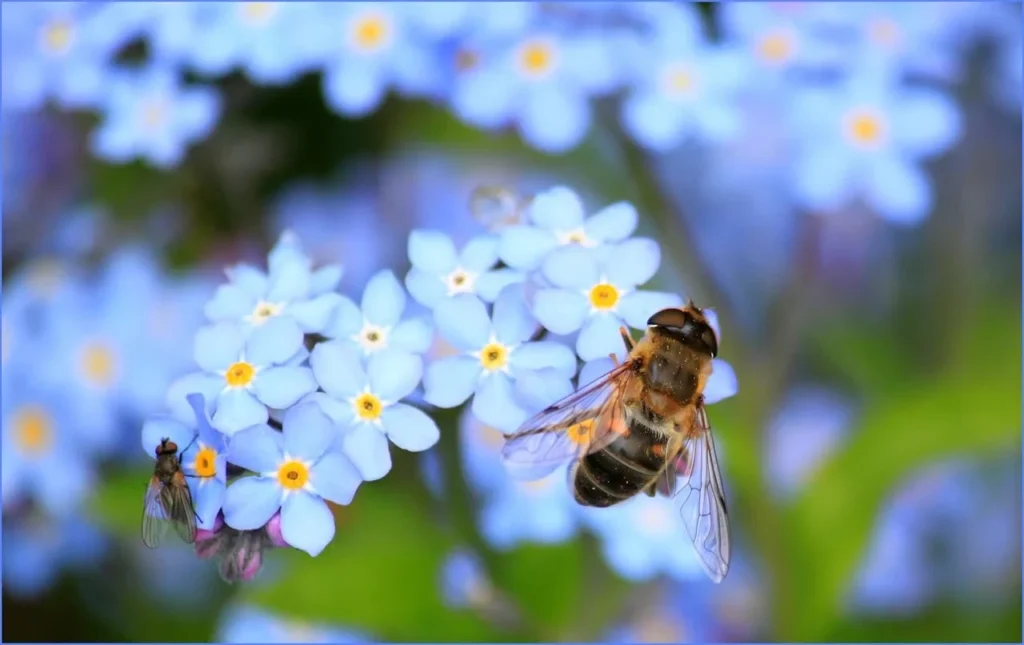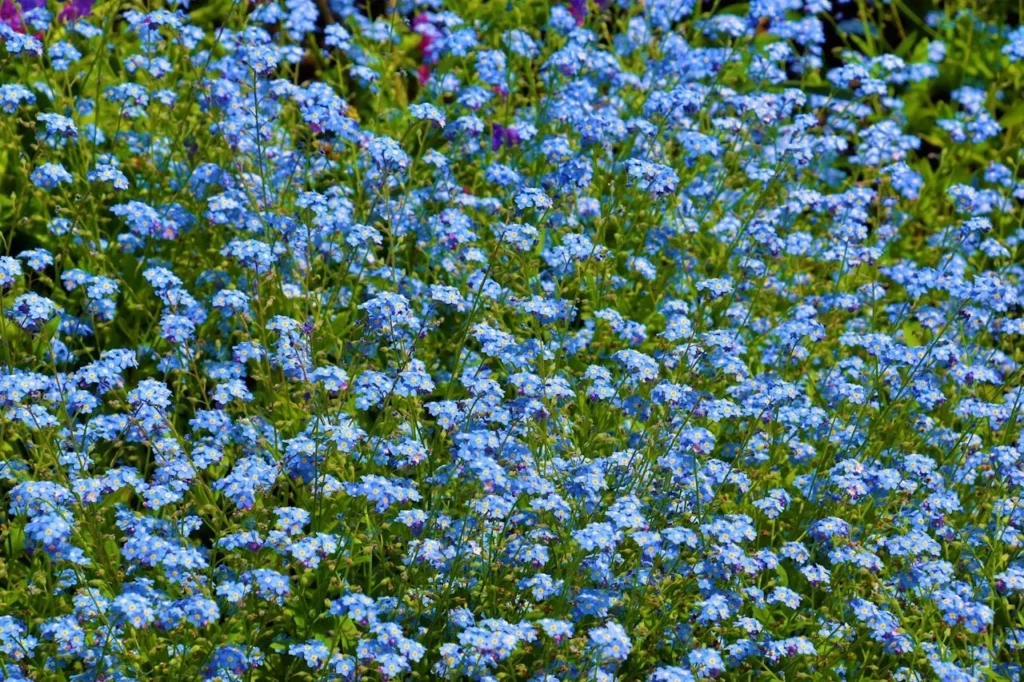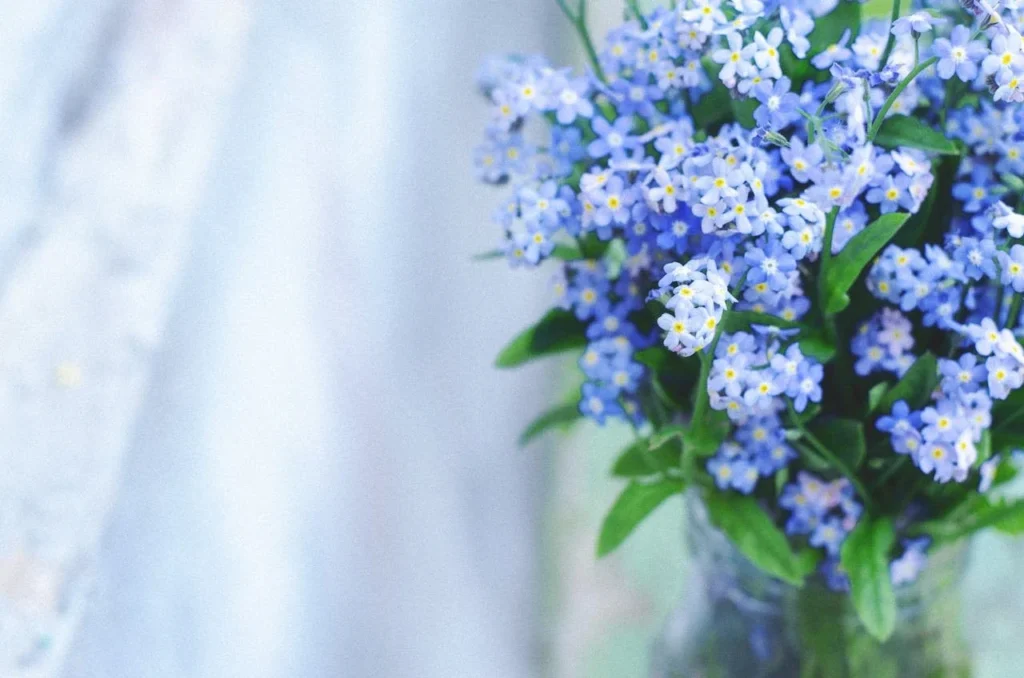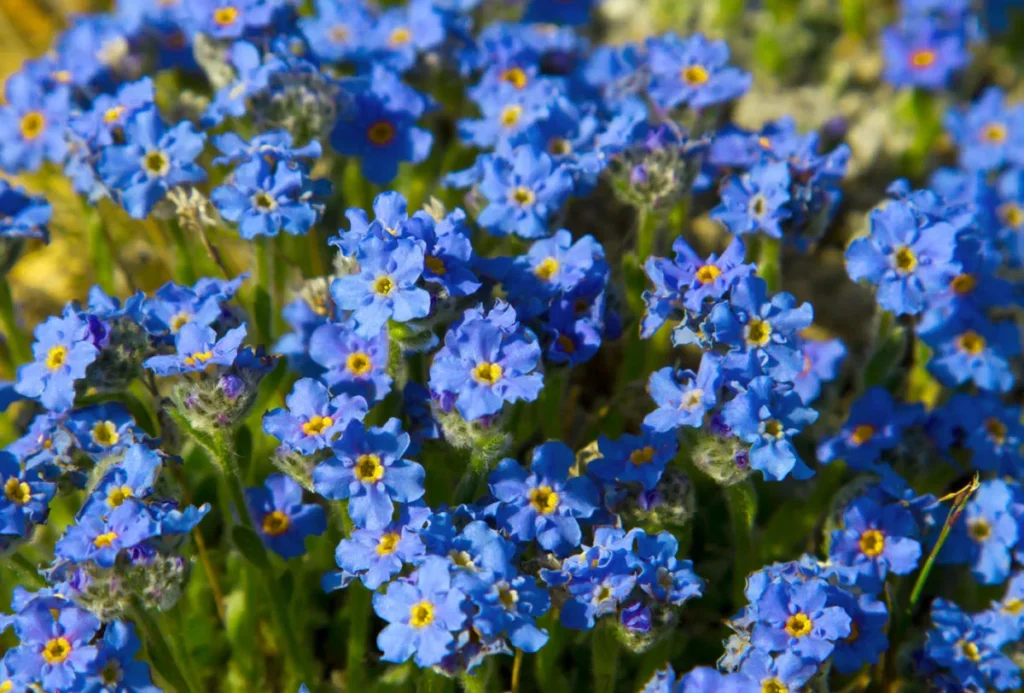The Alaska forget-me-not (Myosotis alpestris) has a long and meaningful history that started more than 40 years before Alaska became a state. It was officially named the territorial flower on April 28, 1917, when Alaska was still a U.S. territory.
Even before that, in 1907, a group called the Grand Igloo Pioneers, men who had lived in Alaska before January 1, 1900, chose the forget-me-not as their symbol. They saw it as a sign of strength, unity, and love for Alaska.
When Alaska became the 49th state in 1959, the forget-me-not was confirmed again as the official state flower. A local poet, Esther Birdsall Darling, wrote a poem celebrating the flower. Her words reminded people that Alaska was here “to stay” and should never be forgotten.
History Timeline (1907–1959)
- 1907: Grand Igloo pioneers first use the forget-me-not as their emblem.
- 1917: Chosen as the official territorial flower of Alaska.
- 1959: Reconfirmed as the official state flower of Alaska when it gained statehood.
Forget Me Not Flower Meaning

The forget-me-not flower symbolizes love, remembrance, and loyalty. Its gentle blue petals remind people to cherish memories and stay connected with loved ones, even when they are apart. You can also gift your loved ones with the forget-me-not customised products and DIYs.
In many cultures, the flower represents faithfulness and lasting friendship. It’s often given as a sign of care and devotion that never fades. In Alaska, it also stands for strength and endurance, showing how both people and nature can thrive through challenges. The forget-me-not reminds us to hold on to love, friendship, and memories that truly matter.
Botanical Facts About the Forget-Me-Not
The alpine forget-me-not is a small, hardy plant that belongs to the Borage family (Boraginaceae). Its scientific name is Myosotis alpestris, and it is sometimes also called Myosotis asiatica.
- Height: Grows about 5 to 12 inches tall.
- Shape: Has thin stems and small clusters of flowers.
- Texture: Stems and leaves often have fine, soft hairs.
- Flower Size: Each flower is about 0.25 to 0.33 inches (6mm) wide.
- Color: Bright or sky blue petals with a yellow center and a white ring inside.

Where It Grows
The alpine forget-me-not grows naturally in Alaska’s high, cold mountain regions. It is usually found at 7,000 to 10,000 feet above sea level. The plant loves moist, well-drained soil and grows best in partial shade, though Alaska’s mild sunlight allows it to survive in full sun too.
You can see this flower in meadows, rocky slopes, forest edges, and near rivers. It also grows in parts of the northwestern United States, western Canada, and northern Europe.
Blooming Season
Because Alaska has a short summer, the forget-me-not blooms for only a short time from late June to late July. The full growing season lasts from June through September, when the plant flowers, produces seeds, and completes its life cycle.
One interesting thing about this flower is its fragrance; it smells stronger at night or in the evening but has little or no scent during the daytime.
Connection to Alaska’s State Flag

The blue color of the Forget-Me-Not is believed to have inspired the blue background of Alaska’s state flag. This connection links two of the state’s most meaningful symbols. The flag and the flower both represent Alaska’s natural beauty and pride.
Different Types of Forget-Me-Nots
The Myosotis family includes many species, scientists estimate between 74 and over 200 kinds worldwide. While the alpine forget-me-not (Myosotis alpestris) is Alaska’s official flower, there are several other popular types:
- Myosotis sylvatica (Wood Forget-Me-Not): Common in gardens, grows 6–12 inches tall, and spreads easily.
- Myosotis scorpioides (Water Forget-Me-Not): Also called scorpion grass; grows 12–24 inches tall and prefers wet areas.
- Victoria Blue: A small plant about 8 inches tall with bright blue blooms.
- Bellamy Pink: A rare pink-colored variety that grows 6–8 inches tall.
- Blue Bird: Grows 10–12 inches tall, featuring the classic sky-blue flowers.
Conclusion
The Alaska forget-me-not is more than just a flower. It’s a lasting symbol of the state’s beauty, history, and resilience. From inspiring Alaska’s state flag to representing the courage of its pioneers, this tiny blue bloom carries a big meaning. It thrives in cold, rugged landscapes, reminding Alaskans to stay strong and never forget their roots. Over a century later, the forget-me-not continues to bloom proudly across Alaska, symbolizing hope, remembrance, and the enduring spirit of the Last Frontier.












